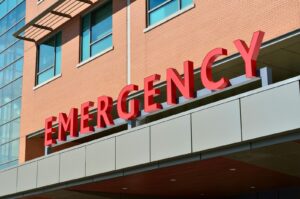Scientists offer Bonfire Night air pollution warning
With people up and down the country attending Bonfire Night celebrations tonight (November 5), a new study has revealed that bonfires and fireworks caused air pollution levels to exceed the Defra recommended level for fine particulate matter (PM2.5) by over three times on November 5, 2018.Â
Researchers from the University of Newcastle collected data from over 3,600 air pollution monitors that measure particulate matter (PM2.5) in Newcastle and Gateshead on bonfire night last year, finding that between 8pm and 12pm on November 5, 2018, levels of PM2.5 reached a peak of 80 ug/m3, over three times the Defra recommended safe level.
The levels recorded between this time period were the highest levels of PM2.5 recorded for the whole of last year in the region.
This data was collected as part of Newcastle University’s Urban Observatory, this is the UK’s largest urban experiment, where researchers are collecting data from 60 different urban indicators from energy use, air pollution to social media activity.
The Urban Observatories is a £12m project in a partnership between the universities of Newcastle, Sheffield and the local councils.
Professor Phil James at Newcastle University who leads the Urban Observatories partnership said: ‘The air pollution data we collected over 24 hours last bonfire night paints a really striking picture of the impact that fireworks and bonfires are having on air quality.’
‘This data shows us just one night, but it demonstrates the level of data we are starting to collect and how we can start to use this to understand how our cities should be managed and developed in the future.’
‘We know there is an urgent need to reduce air pollution, but if we look at this in isolation then we’re storing up a whole host of problems further down the line.’
‘What we are trying to do through the Urban Observatories is to understand exactly how our cities interact.’
‘Once we have that baseline then we can see not only the positive impact when we implement change but also any unintended consequences and adapt our approach.’
‘All cities face similar challenges of air pollution, changing energy demands and traffic volumes, but how each city tackles these challenges will reflect local conditions and priorities.’
‘Only be collecting lots of data can you start to see the subtle changes.’
Photo Credit – Pixabay

















